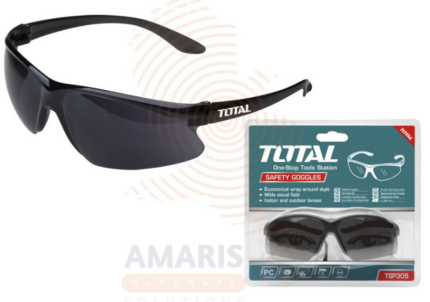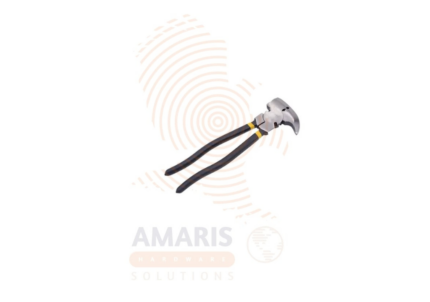Rubber Mallet Fibre Glass Handle
A Rubber Mallet Fibre Glass Handle is a tool designed for various applications, typically in construction, carpentry, and general DIY tasks. This tool consists of a rubber head attached to a handle made of fiberglass. The rubber head is often non-marring, making it suitable for tasks where you need to apply force without causing damage to the surface. The fiberglass handle provides strength, durability, and shock absorption, making the mallet efficient for tasks such as assembling furniture, setting tiles, or any situation where controlled force is required without the risk of damaging delicate materials. The combination of rubber and fiberglass in this mallet design aims to offer a balance between impact resistance, flexibility, and durability.
Table of Contents
ToggleRubber Mallet Fibre Glass Handle
Uses
-
Woodworking and Carpentry:
-
Assembling furniture without damaging delicate wood surfaces.
-
Adjusting or aligning wood joints during assembly.
-
Tapping together wooden pieces without leaving marks.
-
-
Construction:
-
Installing or removing molding and trim work.
-
Adjusting the position of construction materials without causing damage.
-
Tapping formwork into place during concrete pouring.
-
-
Tile and Flooring Installation:
-
Setting tiles into adhesive without cracking or chipping.
-
Adjusting the position of flooring materials during installation.
-
-
Automotive Repair:
-
Aligning body panels without causing dents.
-
Assisting in the installation of certain automotive parts.
-
-
Metalworking:
-
Forming and shaping metal without causing surface damage.
-
Aligning metal pieces during fabrication.
-
-
General Household Repairs:
-
Assisting in various DIY tasks where controlled force is required.
-
Tapping items into place without causing damage.
-
-
Gardening and Landscaping:
-
Installing landscape edging without damaging materials.
-
Adjusting or securing garden structures.
-
-
Maintenance and Repairs:
-
Assisting in home maintenance tasks without marring surfaces.
-
Tapping components into place during equipment repairs.
-
-
Demolition:
-
Breaking down lightweight structures or materials.
-
Removing tiles or other materials without causing excessive damage.
-
-
Non-Damaging Striking:
-
Situations where a non-marring impact is required.
-
Any task where a controlled force is needed without leaving marks.
-
Safety Precautions
-
Personal Protective Equipment (PPE):
-
Wear appropriate PPE, including safety glasses or goggles, to protect your eyes from any debris or particles that may be dislodged during use.
-
-
Grip and Handling:
-
Ensure a secure grip on the mallet handle to maintain control during use.
-
Avoid overextending your reach; stand close to the work area to maintain balance and control.
-
-
Surface Inspection:
-
Inspect the rubber head for any signs of damage or wear before use. Do not use a mallet with a damaged or deteriorated head, as it may fail during use.
-
-
Handle Inspection:
-
Regularly inspect the fiberglass handle for cracks, splinters, or other damage. If any damage is detected, replace the mallet or handle promptly.
-
-
Appropriate Striking Surface:
-
Ensure that the striking surface is appropriate for the task and can withstand the force without breaking or splintering.
-
-
Correct Striking Technique:
-
Use controlled and deliberate striking motions. Avoid swinging the mallet with excessive force, which could lead to loss of control.
-
-
Avoiding Overreaching:
-
Do not overreach or use the mallet in awkward positions, as this may compromise your balance and control.
-
-
Proper Storage:
-
Store the mallet in a dry and cool place to prevent deterioration of the rubber head or fiberglass handle.
-
-
Avoiding Metal-to-Metal Contact:
-
Avoid striking metal objects directly with the mallet, as this can cause damage to the rubber head and reduce its effectiveness.
-
-
Training and Familiarity:
-
Ensure that users are trained on the proper use of the mallet and understand its limitations.
-
Familiarize yourself with the specific tasks and materials for which the mallet is suitable.
-
-
Work Area Safety:
-
Keep the work area well-lit and free from clutter to minimize tripping hazards.
-
-
First Aid Kit:
-
Have a first aid kit on hand in case of minor injuries, and be aware of the location of emergency facilities if working in an industrial setting.
-


 Acrylic Sealants
Acrylic Sealants Construction Adhesives
Construction Adhesives Double-Sided Tape
Double-Sided Tape Duct Tape
Duct Tape Electrical Tape
Electrical Tape Epoxy & Resins
Epoxy & Resins Masking Tape
Masking Tape
 Automotive Wrenches & Socket Sets
Automotive Wrenches & Socket Sets Battery Chargers & Jump Starters
Battery Chargers & Jump Starters Car Jacks & Stands
Car Jacks & Stands Car Wash & Detailing Products
Car Wash & Detailing Products Diagnostic Tools
Diagnostic Tools Tire Inflators
Tire Inflators Vehicle Lighting
Vehicle Lighting Oil & Lubricants
Oil & Lubricants
 Adhesives & Sealants
Adhesives & Sealants Bricks & Blocks
Bricks & Blocks Cement & Concrete
Cement & Concrete Drywall & Plaster
Drywall & Plaster Flooring (Tiles, Wood, Laminate)
Flooring (Tiles, Wood, Laminate) Lumber & Plywood
Lumber & Plywood Paints, Primers & Coatings
Paints, Primers & Coatings Insulation Materials
Insulation Materials Roofing Materials
Roofing Materials
 Circuit Breakers
Circuit Breakers Electrical Cables & Wires
Electrical Cables & Wires Switches & Sockets
Switches & Sockets Fuses & Relays
Fuses & Relays Connectors & Terminals
Connectors & Terminals Electrical Boxes & Panels
Electrical Boxes & Panels Conduit & Fittings
Conduit & Fittings Lighting Fixtures & Bulbs
Lighting Fixtures & Bulbs Extension Cords & Power Strips
Extension Cords & Power Strips
 Anchors
Anchors Bolts
Bolts Clips & Clamps
Clips & Clamps Screws
Screws Nuts
Nuts Washers
Washers Rivets
Rivets Nails
Nails Threaded Rods
Threaded Rods
 Hammers
Hammers Measuring Tools (Tapes, Levels, Calipers)
Measuring Tools (Tapes, Levels, Calipers) Screwdrivers
Screwdrivers Pliers & Cutters
Pliers & Cutters Saws & Blades
Saws & Blades Chisels & Punches
Chisels & Punches Allen Keys & Hex Keys
Allen Keys & Hex Keys Ratchets & Socket Sets
Ratchets & Socket Sets Wrenches & Spanners
Wrenches & Spanners
 Power Tool Accessories (Blades, Bits, Discs)
Power Tool Accessories (Blades, Bits, Discs) Rotary Tools
Rotary Tools Saws (Circular, Jigsaw, Reciprocating)
Saws (Circular, Jigsaw, Reciprocating) Drills & Drivers
Drills & Drivers Grinders & Sanders
Grinders & Sanders Heat Guns
Heat Guns Nail Guns
Nail Guns Impact Wrenches
Impact Wrenches Batteries & Chargers
Batteries & Chargers
 Pipes & Fittings (PVC, Copper, PEX)
Pipes & Fittings (PVC, Copper, PEX) Plumbing Tools
Plumbing Tools Pumps & Motors
Pumps & Motors Sealants & Adhesives for Plumbing
Sealants & Adhesives for Plumbing Valves & Taps
Valves & Taps Water Heaters
Water Heaters Drainage Systems
Drainage Systems Faucets & Fixtures
Faucets & Fixtures Hoses & Tubing
Hoses & Tubing
 Hinges & Latches
Hinges & Latches Hooks & Brackets
Hooks & Brackets Window Hardware
Window Hardware Chains & Cables
Chains & Cables Casters & Wheels
Casters & Wheels Shelving & Storage Systems
Shelving & Storage Systems Door Handles & Locks
Door Handles & Locks Drawer Slides & Cabinet Hardware
Drawer Slides & Cabinet Hardware
 Personal Protective Equipment (PPE)
Personal Protective Equipment (PPE) Respirators & Masks
Respirators & Masks Safety Glasses
Safety Glasses Safes
Safes Security Cameras
Security Cameras Gloves
Gloves Helmets
Helmets Ear Protection
Ear Protection Fire Safety Equipment
Fire Safety Equipment Locks & Padlocks
Locks & Padlocks Motion Sensors & Alarms
Motion Sensors & Alarms
 Garden Fencing
Garden Fencing Garden Furniture Hardware
Garden Furniture Hardware Lawn Mowers
Lawn Mowers Trimmers & Edgers
Trimmers & Edgers Shovels & Spades
Shovels & Spades Rakes & Hoes
Rakes & Hoes Pruning Shears & Loppers
Pruning Shears & Loppers Watering Systems (Hoses, Sprinklers, Nozzles)
Watering Systems (Hoses, Sprinklers, Nozzles)
 Interior Paints
Interior Paints Paint Brushes & Rollers
Paint Brushes & Rollers Paint Strippers & Thinners
Paint Strippers & Thinners Paint Trays & Accessories
Paint Trays & Accessories Exterior Paints
Exterior Paints Spray Paints
Spray Paints Primers & Undercoats
Primers & Undercoats Varnishes & Stains
Varnishes & Stains
 Gaskets & Seals
Gaskets & Seals Hydraulic Fittings
Hydraulic Fittings Industrial Fasteners
Industrial Fasteners Industrial Hoses
Industrial Hoses Lubricants & Greases
Lubricants & Greases Metal Sheets & Bars
Metal Sheets & Bars Bearings & Bushings
Bearings & Bushings Belts & Pulleys
Belts & Pulleys
 HVAC Filters
HVAC Filters Insulation for HVAC
Insulation for HVAC Air Conditioners
Air Conditioners Refrigerants
Refrigerants Ventilation Ducts & Fittings
Ventilation Ducts & Fittings Thermostats & Controllers
Thermostats & Controllers Fans & Blowers
Fans & Blowers
 Pegboards & Hooks
Pegboards & Hooks Shelving Units
Shelving Units Storage Bins & Containers
Storage Bins & Containers Toolboxes & Tool Chests
Toolboxes & Tool Chests Workbenches
Workbenches Drawer Organizers
Drawer Organizers Labeling Supplies
Labeling Supplies
 Welding Accessories (Clamps, Brushes)
Welding Accessories (Clamps, Brushes) Welding Electrodes & Rods
Welding Electrodes & Rods Welding Helmets & Gloves
Welding Helmets & Gloves Welding Machines
Welding Machines Soldering Irons & Stations
Soldering Irons & Stations Flux & Solder Wire
Flux & Solder Wire
 Generator Accessories
Generator Accessories Inverters
Inverters Portable Generators
Portable Generators Power Inverters
Power Inverters Transfer Switches
Transfer Switches Diesel & Gasoline Generators
Diesel & Gasoline Generators
 Transport Equipment: Carts, Dollies, and Hand Trucks
Transport Equipment: Carts, Dollies, and Hand Trucks Storage Solutions: Pallets, Racks, and Containers
Storage Solutions: Pallets, Racks, and Containers Lifting Equipment: Hoists, Cranes, and Jacks
Lifting Equipment: Hoists, Cranes, and Jacks Conveyors and Accessories: Belts and Rollers
Conveyors and Accessories: Belts and Rollers







